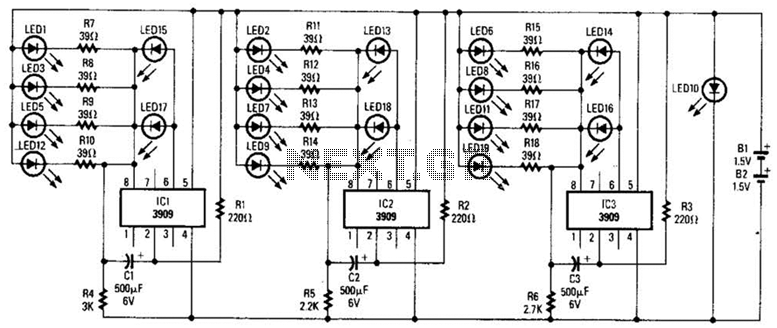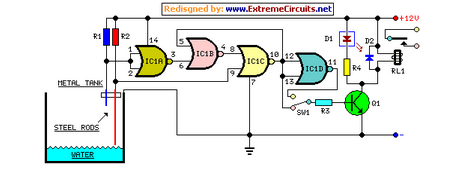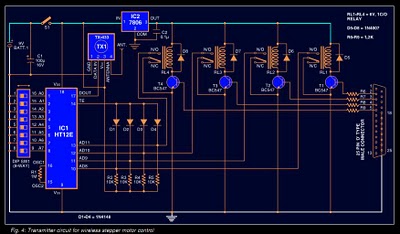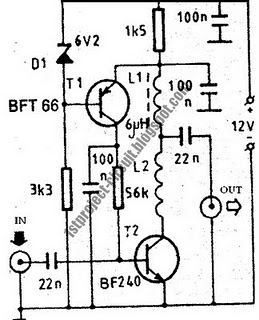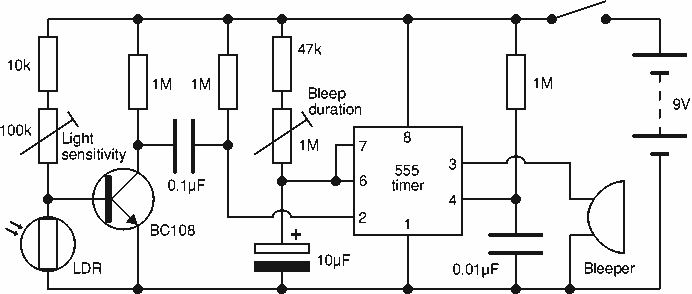
Mini Amplifier Using Lm1895N Circuit
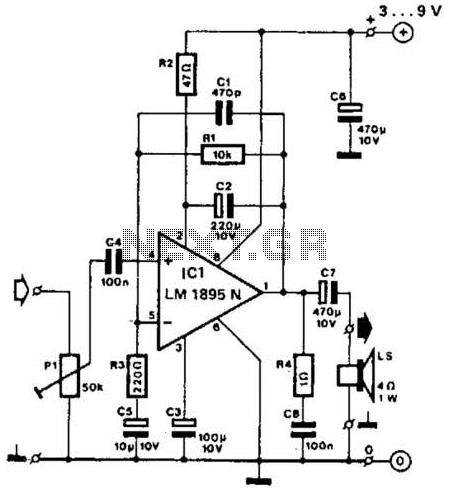
This amplifier operates with supply voltages ranging from 3 V to 9 V and can deliver an output power ranging from 100 mW to 1 W into a 4-ohm load. The bandwidth is approximately 20 kHz at a 3 dB point. This circuit is particularly suitable for low-power and battery-operated applications. Under maximum signal conditions, the drain current is 80 mA at 3 V and 270 mA at 9 V.
The described amplifier circuit is designed for efficient performance across a range of low-voltage applications, making it ideal for portable and battery-powered devices. The output power capability of 100 mW to 1 W allows it to drive small speakers or other loads effectively, with a specific impedance of 4 ohms, which is common in audio applications.
The bandwidth of approximately 20 kHz at the 3 dB point indicates that the amplifier can handle audio signals with good fidelity, making it suitable for audio amplification tasks. The 3 V to 9 V supply range ensures compatibility with various battery configurations, including single-cell lithium-ion batteries or multiple-cell arrangements.
The specified drain current of 80 mA at 3 V and 270 mA at 9 V under maximum signal conditions indicates the amplifier's power consumption characteristics. This information is crucial for battery life considerations in portable applications, as it helps in estimating the operational duration based on the battery capacity.
Design considerations for this amplifier may include thermal management, particularly at higher supply voltages where the drain current increases. Proper heat dissipation methods, such as heat sinks or thermal pads, should be implemented to prevent overheating and ensure reliable operation.
In summary, this amplifier circuit presents a versatile solution for low-power audio applications, with a well-defined output power range, adequate bandwidth for audio signals, and efficient operation across a variety of supply voltages. Its design is particularly advantageous for applications where battery life and compactness are critical factors. With 3-V to 9-V supplies, this amplifier can provide from 100-mW to 1-W output into a 4 and bandwidth is approximately 20 kHz @ 3 dB. This circuit is useful for low-power and battery applications. Drain is 80 mA @ 3 V or 270 mA @ 9 V at maximum signal conditions. 🔗 External reference
The described amplifier circuit is designed for efficient performance across a range of low-voltage applications, making it ideal for portable and battery-powered devices. The output power capability of 100 mW to 1 W allows it to drive small speakers or other loads effectively, with a specific impedance of 4 ohms, which is common in audio applications.
The bandwidth of approximately 20 kHz at the 3 dB point indicates that the amplifier can handle audio signals with good fidelity, making it suitable for audio amplification tasks. The 3 V to 9 V supply range ensures compatibility with various battery configurations, including single-cell lithium-ion batteries or multiple-cell arrangements.
The specified drain current of 80 mA at 3 V and 270 mA at 9 V under maximum signal conditions indicates the amplifier's power consumption characteristics. This information is crucial for battery life considerations in portable applications, as it helps in estimating the operational duration based on the battery capacity.
Design considerations for this amplifier may include thermal management, particularly at higher supply voltages where the drain current increases. Proper heat dissipation methods, such as heat sinks or thermal pads, should be implemented to prevent overheating and ensure reliable operation.
In summary, this amplifier circuit presents a versatile solution for low-power audio applications, with a well-defined output power range, adequate bandwidth for audio signals, and efficient operation across a variety of supply voltages. Its design is particularly advantageous for applications where battery life and compactness are critical factors. With 3-V to 9-V supplies, this amplifier can provide from 100-mW to 1-W output into a 4 and bandwidth is approximately 20 kHz @ 3 dB. This circuit is useful for low-power and battery applications. Drain is 80 mA @ 3 V or 270 mA @ 9 V at maximum signal conditions. 🔗 External reference
